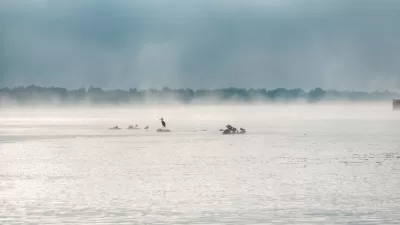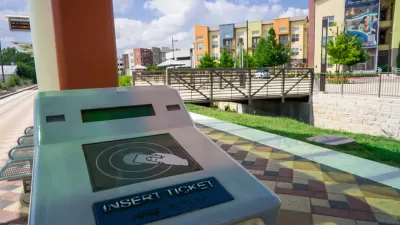Sparsely-populated rural counties with large amounts of public land stand to lose the most if the Trump Administration succeeds in cutting funding to the Payment in Lieu of Taxes (PILT) program.

Emily Guerin reports on the uncertain fate of the Payment in Lieu of Taxes (PILT) program, which funds fire fighting, search and rescue, and other basic services on non-taxable federal lands.
"The Department of Interior announced this week its largest PILT allocation ever, and California, the largest recipient of PILT money, netted $48 million out of a nationwide total of $464 million," reports Guerin. But while the Interior Department touted this year's allocation as evidence of the Trump Administration's support for rural communities, the budget administration's draft budget for 2018, released earlier this year, would cut that spending by almost 17 percent.
Guerin's coverage focuses on the rural areas of Southern California, such as Imperial County. For more on the specific effects of Trump's budget around the rest of the country, see an interactive map showing how the president's budget proposal cuts payments for every county in the nation, created by Mark Haggerty, an economist with Headwaters Economics.
The possible decrease in PILT funding was not the only bad news regarding federal support for rural communities to hit the wires in June. Earlier this month, Planetizen shared a story about USDA Secretary Sonny Perdue abolishing the position of Under Secretary of Rural Development—a position that oversees the Office of Rural Development and its $216 billion budget.
FULL STORY: Cash for rural Western counties could dry up under Trump budget

Study: Maui’s Plan to Convert Vacation Rentals to Long-Term Housing Could Cause Nearly $1 Billion Economic Loss
The plan would reduce visitor accommodation by 25,% resulting in 1,900 jobs lost.

North Texas Transit Leaders Tout Benefits of TOD for Growing Region
At a summit focused on transit-oriented development, policymakers discussed how North Texas’ expanded light rail system can serve as a tool for economic growth.

Why Should We Subsidize Public Transportation?
Many public transit agencies face financial stress due to rising costs, declining fare revenue, and declining subsidies. Transit advocates must provide a strong business case for increasing public transit funding.

How to Make US Trains Faster
Changes to boarding platforms and a switch to electric trains could improve U.S. passenger rail service without the added cost of high-speed rail.

Columbia’s Revitalized ‘Loop’ Is a Hub for Local Entrepreneurs
A focus on small businesses is helping a commercial corridor in Columbia, Missouri thrive.

Invasive Insect Threatens Minnesota’s Ash Forests
The Emerald Ash Borer is a rapidly spreading invasive pest threatening Minnesota’s ash trees, and homeowners are encouraged to plant diverse replacement species, avoid moving ash firewood, and monitor for signs of infestation.
Urban Design for Planners 1: Software Tools
This six-course series explores essential urban design concepts using open source software and equips planners with the tools they need to participate fully in the urban design process.
Planning for Universal Design
Learn the tools for implementing Universal Design in planning regulations.
Ascent Environmental
Borough of Carlisle
Institute for Housing and Urban Development Studies (IHS)
City of Grandview
Harvard GSD Executive Education
Toledo-Lucas County Plan Commissions
Salt Lake City
NYU Wagner Graduate School of Public Service





























